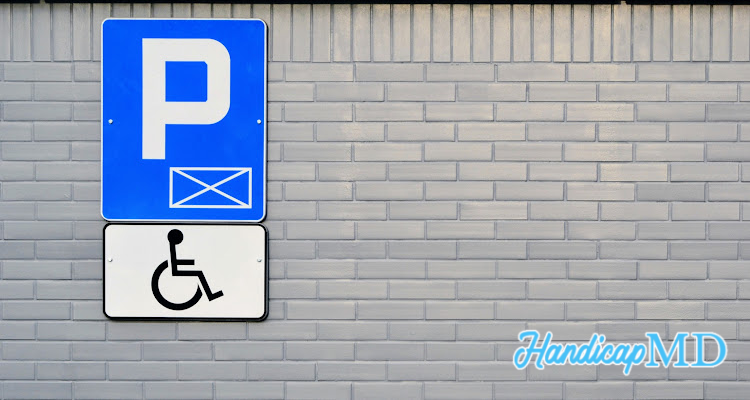
Unveiling the Rules and Regulations of Using a Handicap Placard in North Dakota
Introduction
Welcome to North Dakota, where ensuring accessibility for all is a top priority. If you or a loved one holds a permit, it's essential to understand the rules and regulations surrounding its use. Disabiliyu permits are essential tools that offer convenience and accessibility to individuals with disabilities. In ND, just like in other states, these passes play a vital role in ensuring that those with limited mobility can access public facilities and parking spaces. This article will unveil the rules and regulations governing the use of handicap placards in North Dakota, from eligibility criteria to proper usage and consequences of misuse.
Who Qualifies for a Handicap Placard?
Eligibility Criteria
To qualify for a handicap permit in North Dakota, individuals must meet certain criteria. These criteria typically include having a medical condition that significantly impairs mobility, such as difficulty walking, requiring assistance devices like crutches or wheelchairs, or having a respiratory condition that necessitates shorter walking distances.
The Application Process
Applying for a disability permit involves completing a specific form, which can be obtained from the North Dakota Department of Transportation. Along with the form, applicants may need a medical professional's certification to verify their eligibility.
Types of Placards
Temporary vs. Permanent Placards
North Dakota offers two types: temporary and permanent. Temporary ones are issued for a limited duration, often based on the applicant's medical condition, while permanent ones are issued for a more extended period.
Differences and Usage
It's essential to understand the distinctions between temporary and permanent passes. Temporary permits are typically blue, while permanent passes are red. Temporary passes are for short-term disabilities, while permanent ones are for long-term disabilities. It's crucial to display the correct pass based on your circumstances.
Renewing and Replacing Placards
Duration and Renewal Process
The duration of a disability permit varies based on your medical condition. Temporary passes typically last for six months, while permanent ones can be valid for up to three years. Renewal requires reapplying and obtaining medical certification as needed.
What to Do If a Placard Is Lost or Stolen
If your permit is lost or stolen, it's crucial to report it to the NDDOT and apply for a replacement. Using a lost or stolen permit is illegal and can result in penalties.
Proper Display of Placards
Rules and Guidelines
Handicap passes must be displayed in a visible and easily accessible manner when parking in designated parking spaces. The permit should hang from the rearview mirror, and the expiration date should be visible from outside the vehicle.
Avoiding Misuse
Misusing a disability permit, such as lending it to others or using it when the authorized person is not in the vehicle, is a serious offense. It not only violates the law but also deprives individuals with genuine mobility issues of much-needed resources.
Parking with a Disability Placard
Designated Parking Spaces
Handicap passes grant access to disabled parking spaces specifically reserved for individuals with disabilities. These spaces are usually located closer to entrances and facilities, providing easier access.
Benefits of Having a Permit
The benefits of having a disability permit include the convenience of parking in proximity to your destination, reducing the physical strain on individuals with mobility issues.
Penalties for Misusing a Handicap Placard
Legal Consequences
Misusing a disability pass is subject to penalties, including fines and potential legal action. It's important to respect the privilege and use it only as intended.
Reporting Misuse
If you suspect someone is misusing a pass, you can report it to the ND Department of Transportation, ensuring the proper authorities address the issue.
Traveling with a Handicap Placard
Use Outside North Dakota
North Dakota's handicap placards are often recognized in other states, but it's essential to check the specific regulations of the state you're visiting to ensure compliance.
Interstate Recognition
Many states have agreements to recognize each other's passes, making it more convenient for travelers with disabilities.
FAQ
Can I use a disability permit from another state in ND? Yes, North Dakota recognizes permits from other states. However, it's essential to adhere to North Dakota's specific rules and regulations when parking.
How do I know if I'm eligible for a disability pass? Eligibility is determined by a licensed physician who assesses your mobility limitations. If you believe you qualify, consult your doctor to initiate the process.
Are designated parking spots always free? While parking in disability spots is typically free, always check local parking regulations, as there might be exceptions.
What do I do if my disability permit is lost or stolen? Report the loss to your local DMV immediately, and they will guide you through the process of obtaining a replacement.
Can I lend my pass to a family member with a disability? These are non-transferable. They are issued to a specific individual and can't be used by others.
Can I appeal a permit denial if I believe I qualify for one? Yes, if your application is denied, you have the right to appeal. Consult the ND DMV for the proper procedure.
Conclusion
Understanding the rules and regulations of using a handicap placard in North Dakota is essential to ensure accessibility and fairness for all. By following the guidelines, you can contribute to a more inclusive environment for those who rely on these accommodations. Keep in mind that misuse of a handicap placard not only carries penalties but also hinders the mobility of those who truly need it.
.png)






